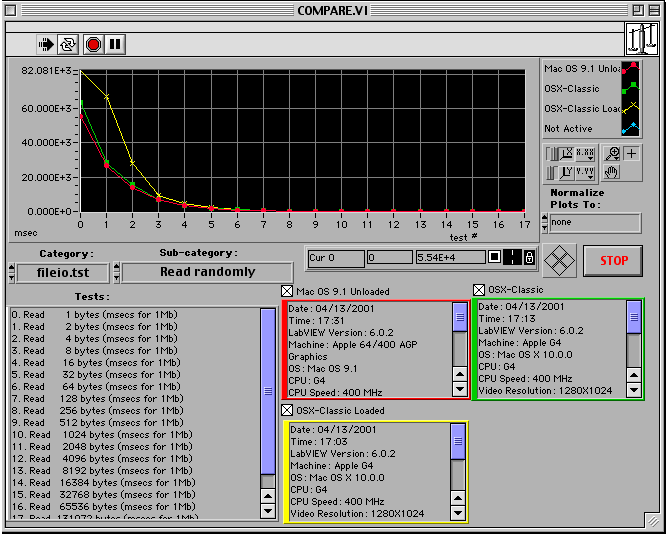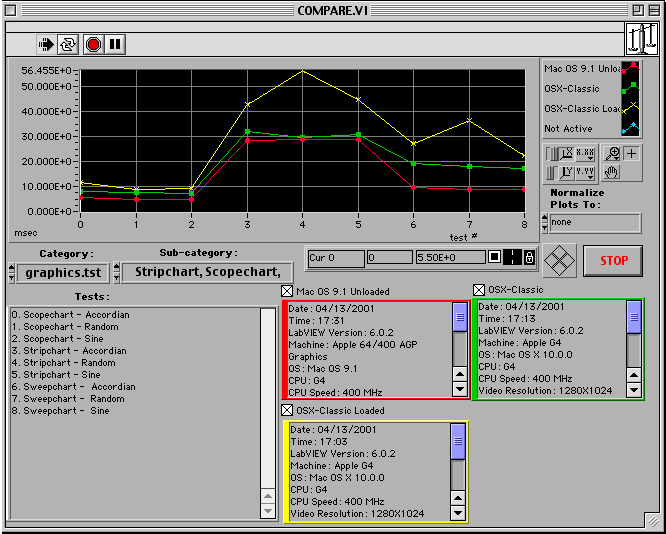LabVIEW Mac OS X Speed Test
These are results from running the old LabVIEW benchmark VIs that National Instruments put out for version 3. I doubt that they are really indicative of real world performance and I would not take them too seriously. However, that being said, they will show if there is a big performance hit in running LabVIEW under the classic environment.
The short answer is no. There is a small hit of about 10 to 15% compared to the native OS but that is probably because even in the "rest" state there is still a lot of activity in a Un*x style OS. This is consistent with the performance penalty in other programs such as Igor.
I did not print all the graphs but here is a small sampling of the Analysis, File I/O, Graphics, and Memory subsytems. The top curve (Yellow) is under Mac OS X with a LOT of applications open but not any user activity. The green curve is the same system but without any other applications open. The Red curve is after rebooting into the old OS 9.1 system. In this case by a lot I mean:
- Finder (has to be running)
- Appleworks (editor, spreadsheet, database, presentation graphics)
- Vectorworks (CAD, under classic)
- iCab (browser)
- Eudora (Mail system, checks mail automatically)
- CPU Monitor (continuous graph)
- Granet (network throughput monitor, continuous graph)
- Canvas (Graphics, under classic)
- System Preferences
- Filemaker Pro (Database under classic)
- TextEdit (carbon application)
- Gnuplot (carbon application)
- Project Builder (carbon application, developer tool)
- Itunes (playing internet blues radio)
- LabVIEW (of course)
The unloaded Mac OS X had the finder and LabVIEW though there was a background web server and other system tasks. The Mac OS 9 only had the finder and LabVIEW. Even the heavily loaded system had no major slowdowns in speed. The ability of OS X to take advantage of multiple processors is a big win.
Analysis

File I/O

Graphics

Memory
 [an error occurred while processing this directive]
[an error occurred while processing this directive]



 [an error occurred while processing this directive]
[an error occurred while processing this directive]